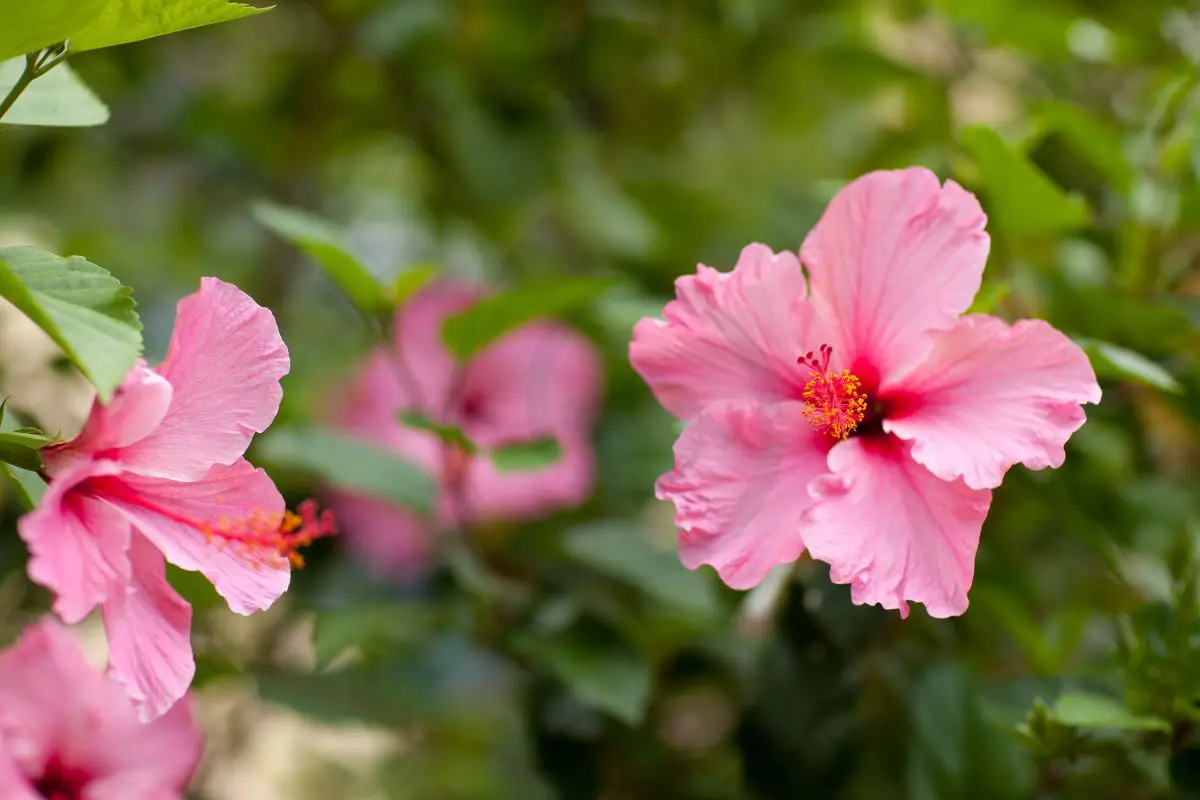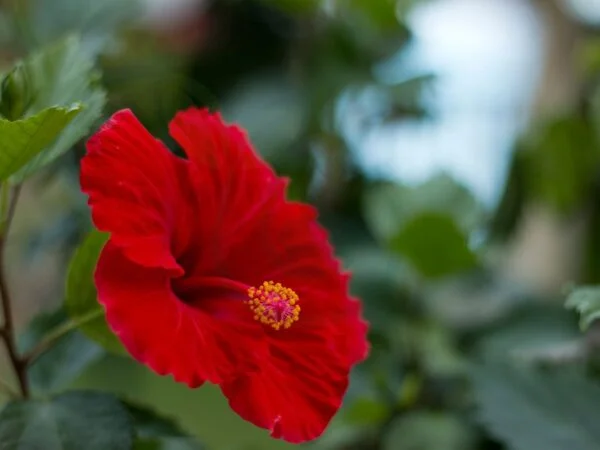Are you wondering how often to water hibiscus plants for vibrant blooms? Understanding the watering needs of your hibiscus can be the difference between thriving or wilting flowers. In this guide, we'll delve into the essential tips to keep your hibiscus healthy and blooming.
To ensure your hibiscus thrives, we will cover the ideal watering frequency, signs of overwatering or underwatering, and best practices for maintaining optimal soil moisture levels. By following these guidelines, you can enjoy a lush and colorful display of hibiscus flowers in your garden, which grow with sufficient water. Stay tuned for expert advice on nurturing your hibiscus plants!
Key Takeaways
- Choose a sunny location: Hibiscus plants thrive in full sun, so select a spot that receives at least 6 hours of sunlight daily.
- Ensure well-draining soil: Prepare soil that is rich in organic matter and drains well to prevent waterlogging, which can harm hibiscus roots.
- Establish a watering routine: Water hibiscus plants deeply once or twice a week, allowing the soil to dry slightly between waterings to prevent root rot.
- Feed with balanced fertilizer: Use a fertilizer specifically formulated for flowering plants to promote healthy growth and vibrant blooms.
- Prune for shape and health: Regularly prune hibiscus to remove dead or diseased branches, encourage new growth, and maintain a desirable shape.
- Monitor for pests and diseases: Keep an eye out for common hibiscus pests like aphids and whiteflies, and promptly address any signs of disease to protect plant health.
Choosing Location
Sunlight Needs
Place hibiscus in an area with full sun exposure. Ensure 6-8 hours of sunlight daily for growth. Avoid shaded spots to prevent stunted growth.
Soil Type
Use slightly acidic soil with pH between 6.5 and 6.8 for hibiscus. Add compost and earthworm castings to enrich the soil. Choose acidic plant potting soil for containers.
Space Considerations
Space hibiscus plants 3-6 feet apart for proper growth. Allow room for root expansion and air circulation. Avoid overcrowding to prevent nutrient competition.
Preparing Soil
Testing pH
Test the soil's pH before planting hibiscus to ensure it falls within the ideal range for optimal growth. Adjust the pH levels using products like Pennington Fast Acting Lime or soil sulfur if necessary. Keeping the soil pH balanced is crucial for healthy plant development.
Adding Nutrients
Feed hibiscus every two weeks with a blooming plant fertilizer to promote vibrant blooms. Supplement the plant's diet with essential nutrients monthly using specialized plant food for overall health. Applying Epsom salt monthly can help maintain dark-green foliage, enhancing the plant's appearance.
Drainage Improvement
Ensure your soil has proper drainage to prevent waterlogging, which can harm hibiscus plants. Enhance water drainage by incorporating organic matter like compost into the soil. Raised beds are an excellent option for areas with poor drainage, ensuring water flows away from the roots effectively.
Planting Hibiscus
Digging Holes
When planting hibiscuses, dig holes twice as wide as the root ball for proper growth. Ensure the planting depth aligns with the root ball height. Backfill the hole with soil and tamp gently to eliminate air pockets.
Root Care
Handle hibiscus plants' roots delicately during planting to prevent damage. Spread out the roots in the planting hole, water for optimal establishment. Water deeply post-planting to stimulate healthy root growth.
Initial Watering
After growing hibiscus, water newly planted ones daily for the initial week. Transition to watering once every two days during the second week. Maintain a consistent watering schedule of about twice a week thereafter.
Watering Schedule
Frequency
Hibiscus plants require consistent watering to thrive, but the frequency depends on various factors.
Seasonal Adjustments
- Adjust watering based on seasonal changes to meet the plant's needs.
- Increase watering in hot and dry weather to ensure adequate hydration.
- Reduce watering during cooler seasons to prevent overwatering and root rot.
Weather Considerations
- During dry spells, water more frequently to maintain soil moisture levels.
- Monitor rainfall patterns and adjust watering accordingly to prevent dehydration or waterlogging.
- Shield hibiscus from extreme weather conditions like strong winds, heavy rains, or water to avoid stress.
Signs of Overwatering
- Yellowing leaves and wilting are indications of overwatering, signaling excess moisture in the soil.
- Check for mold growth on the soil surface, which can result from excessive watering.
- If symptoms of overwatering are present, modify the watering schedule promptly to prevent further damage.
Signs of Underwatering
- Drooping leaves with dry, crispy edges suggest that the hibiscus is underwatered.
- Verify soil moisture by inserting a finger into the soil; if it feels dry, increase watering.
- Persistent signs of underwatering indicate that the plant requires more frequent watering for optimal growth.
Fertilizing Practices
Choosing Fertilizer
Select a blooming plant fertilizer for established hibiscus. Opt for a fertilizer with the appropriate nutrient ratio to meet the plant's needs. Consider using slow-release fertilizers to ensure a consistent supply of nutrients over time.
Application Schedule
Feed hibiscus every two weeks with a blooming plant fertilizer during the growing season. Apply additional nutrients monthly to support healthy plant growth. Always follow the manufacturer's instructions for proper fertilizer application to avoid any issues.
Over-Fertilization Symptoms
Watch out for signs of over-fertilization such as leaf burn and stunted growth in your hibiscus plants. Keep an eye on excessive foliage growth with reduced flowering, which could indicate an imbalance in nutrients and water. If you suspect over-fertilization, flush the soil with water to remove any excess fertilizer salts.
Pruning Techniques
Best Times to Prune
Prune hibiscus by one-third in late winter or early spring. Removing spent blooms regularly is crucial to encourage new flowering. Avoid heavy pruning during the blooming season to prevent flower loss.
Promoting Blooms
- Deadhead spent blooms to promote continuous flowering.
- Provide adequate sunlight for optimal blooming.
- Fertilize hibiscus regularly with a blooming plant fertilizer.
Shaping Plants
Trim hibiscus to maintain desired shape and size, encouraging bushier growth and more blooms. It's best to shape hibiscus after the blooming season for optimal results.
Pest Management
Common Pests
Monitor your hibiscus plants regularly for aphids, spider mites, thrips, and whiteflies. Check the undersides of leaves where pests often hide. Promptly address any pest infestations to prevent harm to your plant.
Natural Remedies
Combat common pests using neem oil or insecticidal soap. Introduce helpful insects like ladybugs to control pest populations naturally. For a natural deterrent, apply a spray made from garlic or chili pepper and water.
Chemical Treatments
In severe cases, consider using Sevin Sulf for pest infestations. Always follow the instructions provided by the manufacturer when applying chemical treatments. Reserve chemical solutions as a last resort after attempting natural remedies.
Disease Prevention
Identifying Diseases
Watch for signs of foliar diseases like mildew on hibiscus. Check for yellowing or browning of leaves as symptoms of disease. Consult a local extension office for accurate disease diagnosis.
Preventative Measures
Avoid overhead watering to prevent foliar diseases. Provide proper air circulation around hibiscus plants. Remove and dispose of diseased plant parts to prevent disease spread.
Treatment Options
Treat fungal diseases with fungicides labeled for hibiscus. Use insecticidal soaps for controlling common pests. Consider systemic treatments for persistent pest infestations.
Encouraging Blooms
Sunlight Exposure
To encourage blooms, ensure your hibiscus gets full sun exposure for 6-8 hours daily. Place it in a south-facing spot to maximize sunlight absorption. Shield it from harsh afternoon sun to prevent leaf scorch.
- Hibiscus needs full sun for colorful blooms
- South-facing locations optimize sunlight intake
- Protect from harsh afternoon sun to avoid leaf damage
Proper Nutrition
For healthy blooming, feed your hibiscus with a balanced plant fertilizer regularly. Consider supplementing with Epsom salt for lush foliage. Adjust fertilization frequency based on growth and blooming cycles.
- Balanced fertilizer promotes vibrant blooms
- Epsom salt boosts foliage health
- Tailor fertilization to plant development
Adequate Watering
Water hibiscus daily initially, then switch to a consistent watering routine. Adjust watering based on weather and plant requirements, avoiding overwatering by letting the soil dry slightly between waterings.
- Daily watering initially aids plant establishment
- Transition to regular watering schedules for stability
- Prevent overwatering by allowing soil to dry out slightly
Closing Thoughts
By following the steps outlined in this guide, you can ensure that your hibiscus plants thrive and bloom vibrantly. Selecting the right location, preparing the soil adequately, and adhering to a consistent watering schedule are all essential for the health of your plants. Proper fertilization, pruning techniques, and vigilant pest and disease management will contribute to the overall well-being of your hibiscus garden. Remember, a little care and attention go a long way in fostering beautiful blooms and lush foliage.
Now that you have all the tools to care for your hibiscus plants effectively, water them and put this knowledge into practice. Take the time to implement these strategies and watch as your garden flourishes. Share your newfound expertise with fellow gardening enthusiasts and continue to nurture your green thumb. Your thriving hibiscus plants will be a testament to your dedication and love for gardening.
Frequently Asked Questions
How do I choose the best location for my hibiscus plants?
Select a spot with full sun exposure, well-draining soil, and protection from strong winds. Hibiscus thrives in warm climates and needs at least 6-8 hours of sunlight daily.
How should I prepare the soil before planting hibiscus?
Ensure the soil is rich in organic matter and well-draining. Mix in compost or peat moss to improve fertility and drainage. Aim for a slightly acidic pH level between 6.0-6.5 for optimal growth.
What is the recommended watering schedule for hibiscus plants?
Water deeply but infrequently, allowing the top inch of soil to dry out between waterings. In general, hibiscus plants require watering every 2-3 days during hot weather and less frequently during cooler months.
When and how should I fertilize my hibiscus plants?
Fertilize hibiscus monthly during the growing season with a balanced fertilizer high in potassium to promote blooming. Avoid over-fertilizing as it can lead to excessive foliage growth at the expense of flowers.
How can I prevent diseases in my hibiscus plants?
To prevent diseases, avoid overhead watering to reduce humidity levels around the plant. Ensure good air circulation, remove any infected plant parts promptly, and apply fungicides preventatively if necessary. Regularly inspect your plants for signs of disease.
Image Source: Paid image from CANVA




